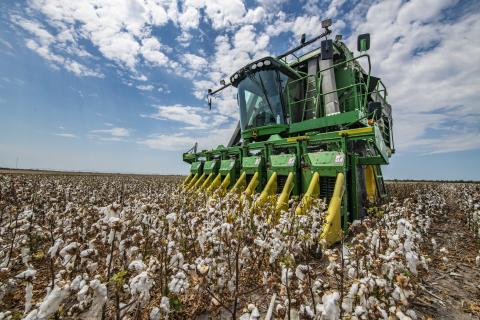A Story of Drought and Deluge
Climate change in the Southern Plains is a story of drought and deluge - we expect increasing drying periods with more extreme, intense rainfall. Climate is what you expect, and weather is what you get. However, climate change is shifting what we expect, and thus, changing what we get.
Understanding the risks producers face from weather and climate extremes and changes is essential to sustaining resilient agricultural systems. The wide range of cropland, grazing, and forested land management activities across the Southern Plains makes understanding these risks challenging.
Overview
The Southern Great Plains (Kansas, Oklahoma, and Texas) features weather that is dramatic and consequential, as described by the Fourth National Climate Assessment (NCA4). The region’s people and economies are “at the mercy” of such extreme weather including tornadoes, large hail, ice storms, and drought, to name a few. Average annual precipitation spans a wide gradient: from less than 10 inches in the western reaches of Texas to over 60 inches in the southeastern corner along the border with Arkansas and Louisiana.Observed changes in climate
Over the past 50 years, significant flooding and rainfall events have followed drought in approximately one-third of the drought-affected periods in the region when compared against the early part of the 20th century.
Record-breaking flooding events have been increasing over the past 30 years; however, the Southern Great Plains has also experienced an overall decrease in flood frequency, possibly related to the decrease in total precipitation over the same period.
Annual average temperatures have increased 1-2 degrees F since the early 20th century, with the greatest warming during the winter months.

Projected changes
More intense rainfall: Overall exposure to extreme rainfall events will increase with more frequent and intense heavy precipitation. However, these increases in precipitation intensity mean fewer soaking rains and more time to dry out between events, increasing soil moisture stress.
Warming-related drought amplification: Higher temperatures combined with less total precipitation will increase aridity resulting in drier surfaces, higher evaporative demand by plants, and more intense droughts.
Drought impacts on agriculture and rangelands
Reduced agricultural production: Increased evaporation rates caused by high temperatures associated with drought will exacerbate plant stress and reduce yields. Due to low biomass production, soil carbon is depleted, which in turn, will decrease the resilience of agroecosystems. Drought has resulted in $16.5 billion in crop insurance payouts due to drought since 1989 in the region.
Reduced water availability: Warming-related drought will increase the imbalance between renewable water supplies and consumptive water demands. Limited water availability due to drought can constrain agricultural production, and result in resource struggles among important food, energy, and water consumers in the region. In addition to reduced water availability for human uses and ecological functioning, we can expect increased evaporative losses from reservoirs.
Increased demand on limited groundwater resources: As the reliability of rainfall, soil moisture, and surface water decreases, the importance of groundwater resources will increase. Groundwater from the Ogallala Aquifer benefits the agricultural sector; however, this resource is shrinking faster than it is replenishing.
Reduced forage availability: Since 1982, much of Texas and the Oklahoma Panhandle have exhibited the most notable decreasing trends in rangeland vegetation abundance and growing conditions relative to other western rangeland regions. Tallgrass prairie may be more vulnerable to drought since these more humid regions are less accustomed to drought conditions.
Check out the Hub’s recent reports and assessments for more information about the risks in your state.
Resilient Southern Plains Agriculture and Forestry in a Changing Climate (Conference Report)
Regional assessments
Southern Plains Vulnerability Assessment
Southern Plains Vulnerability Assessment ( Español )
4th National Climate Assessment: Southern Great Plains

